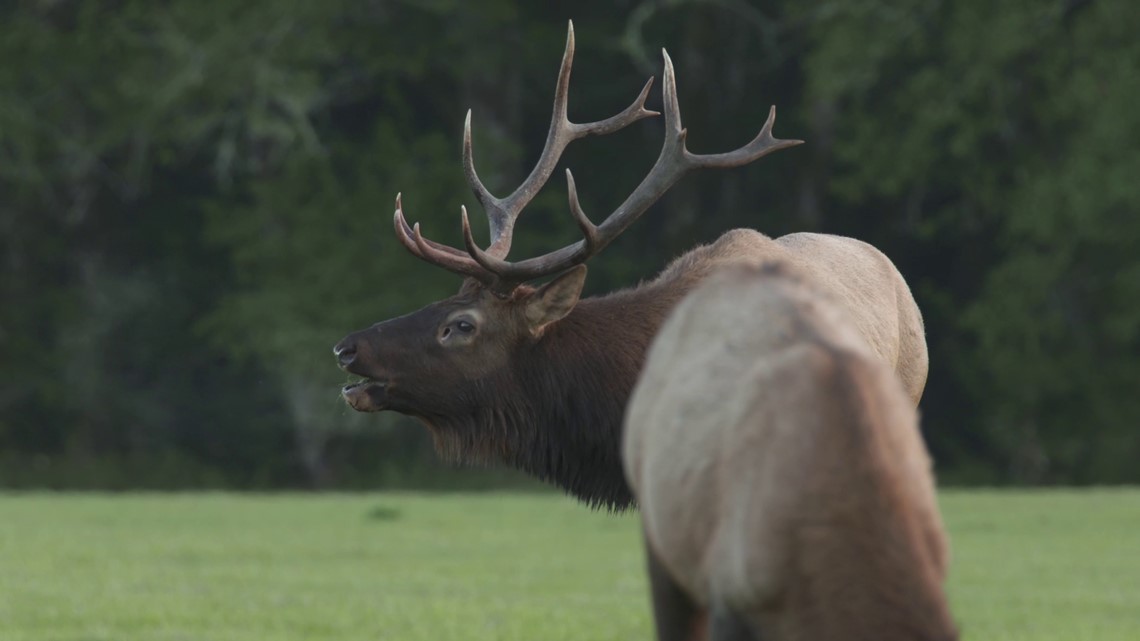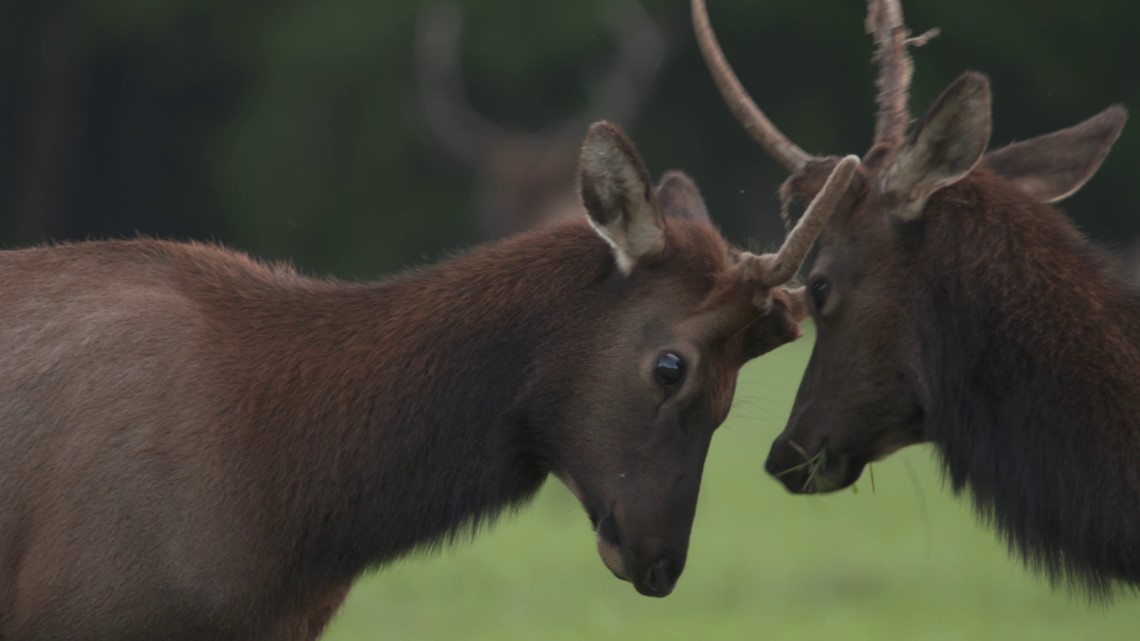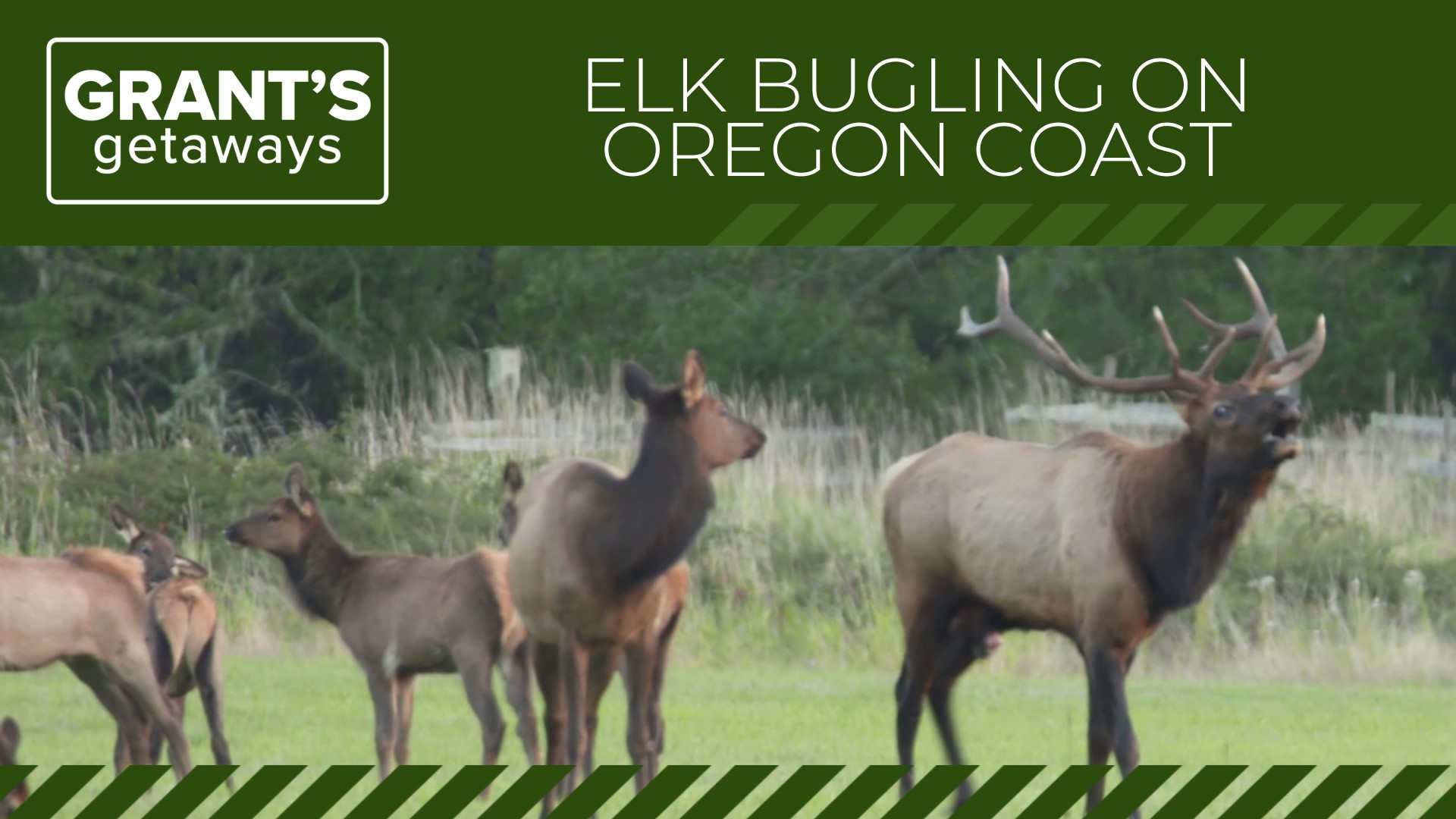SEASIDE, Ore. — An October sunrise across the Jewell Wildlife Area is cool, crisp and quiet, but not for long.
Elk bugling is unlike any trumpet or trombone that you’ve ever heard, according to wildlife area manager Bryan Swearingen.
"All bull elk will bugle, but most of the bugling that you hear out here during the rut is from the mature bulls because they are dominant and actually run the smaller bulls off," said Swearingen. "The bulls bugle at one another, they challenge one another, then they kind of pace side by side."
Swearingen added that there are many other signs that the rut, or elk breeding season, has arrived.
"The bull elk will square off and then suddenly, they turn and lock their antlers with each other and push against one another," he said. "It goes on, back and forth for several minutes, and the elk really mean business until one of them finally gives up."
It isn’t a fight to the death, but a pushing match that determines strength and virility in the herd. The bull elk grow antlers up to five feet high with a tip-to-tip spread that’s even wider.
RELATED: Grant's Getaways: Hydrangea Ranch
As hormones rise, the bulls become more aggressive and alder tree rubs are common.
"I think the tree rubs color up the antlers and it also lets the elk burn up some of their aggression. It also helps establish herd dominance," said Swearingen. "If they tear up a tree, it says to the other elk 'I’m meaner than you so stay away from me.'"
You won’t want to stay away from the Jewell Wildlife Area at this time of year, but keep in mind that Jewell is but one three Oregon elk watch sites that provide amazing moments in the wild.


Each December, Ed Miguez with the Oregon Department of Wildlife, drives the feed truck 150 miles a day to reach 10 feeding stations across the 12,000acre Elkhorn Wildlife Area that sprawls across Union and Baker counties.
"The reason we do this is because elk traditionally would go off to the valley and just go from haystack to haystack to haystack. They would wipe out 200-300 tons of hay in a few days," he said.
The Elkhorn Wildlife Area winter feeding program began in 1971 to keep hungry rocky mountain elk up in the forest rather than ranch lands on the valley floor. Other wildlife benefit from feeding benefit too, including hundreds of mule deer.
While most of the Elkhorn Wildlife Area is closed to public entry in winter – so not to disturb the elk – the Anthony Creek Feeding Station stays open so visitors can stand by a warming fire and enjoy the wildlife show a few hundred feet away.


There’s one more show that should not be missed on this statewide elk watch.
Watch for dancing antlers at Dean Creek Elk Viewing Area along State Highway 38, three miles east of Reedsport, Oregon. They are guaranteed to stop you in your tracks, according to Bob Golden with the Bureau of Land Management.
"As people stop, the elk get more curious and come closer to the fence line. Sometimes, the entire herd is just three or four yards from the fence," Golden said.
The elk have lived on the 1,000-acre Dean Creek site since the 1930’s when salt marshes were drained and fresh water fed the grasslands. The grass now feeds a herd of 120 roosevelt elk.
Back at Jewell Wildlife Area, Swearingen said that visitors should bring patience when they come – and don’t be afraid to linger longer – even after sunset.
"It may well be worth your time to wait an hour after dark and just listen because you will hear antlers clashing and bugling bulls - you may not see much it’s still a good experience," Swearingen said.
Be sure to follow my Oregon adventures via the Grant’s Getaways podcast.
Each segment is a story-telling session where I relate behind the scenes stories from four decades of travel and television reporting.
You can also learn more about many of my favorite Oregon travels and adventures in the Grant’s Getaways book series, including:
"Grants Getaways I," Photography by Steve Terrill
"Grant's Getaways II," Photography by Steve Terrill
"Grant’s Getaways: 101 Oregon Adventures," Photography by Jeff Kastner
"Grant’s Getaways: Guide to Wildlife Watching in Oregon," Photography by Jeff Kastner
"Grant’s Getaways: Oregon Adventures with the Kids," Photography by Jeff Kastner. The collection offers hundreds of outdoor activities across Oregon and promises to engage a kid of any age.
WATCH: Grant's Getaways playlist

